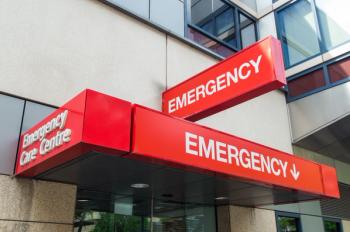
- Psychiatric Times Vol 29 No 4
- Volume 29
- Issue 4
Psychopharmacology of Aggression and Violence in Mental Illness
Several studies have been undertaken to test the efficacy of drugs in the management of aggression and hostility in patients with schizophrenia and other mood disorders.
Most patients with mental illness are not violent, and when violent behavior does occur, it is usually transient.1 Nevertheless, violent behavior is a challenging problem. Swanson and colleagues 2 provided evidence that demonstrated that schizophrenia and major mood disorders confer an elevated risk of violent behavior, and that risk is augmented by comorbid substance use disorders and by comorbid personality disorders.
Comorbid substance use disorders play a particularly important role in the development of violent behavior in schizophrenia. This was studied in a meta-analysis of violent criminality using data from 18,423 individuals with schizophrenia and other psychoses.3 The odds ratio for violent crime was 2.1 (95% confidence interval [CI], 1.7 - 2.7) without comorbidity, but it increased to 8.9 (95% CI, 5.4 - 14.7) with comorbidity. The difference between odds ratios indicated a marked effect of substance abuse on violent crime.
The clinical importance of this effect is underlined by the fact that risk for substance use disorders in schizophrenia is very high; lifetime prevalence of this comorbidity in schizophrenia is estimated at 47%.4 For these reasons, evaluation of comorbid substance use disorders is an important component of the clinical assessment of patients with schizophrenia. Management of comorbid substance use disorders must be an inherent part of the treatment plan.
Violent behavior is heterogeneous in origin, and its development is not limited to the context of mental illness.5 Therefore, management approaches that rely exclusively on psychopharmacology are frequently unsuccessful-not only because of incorrect societal context, but also because violent behavior in mental illness frequently results from nonadherence to treatment.6
Acute management of agitation and violent behavior
Agitation is a common reason for presentation to an emergency department (ED); it can tip the decision for in-patient care and can be an obsta-cle to hospital discharge. Agitation can easily escalate to aggression and violent behavior, and thus acute agitation is considered a behavioral emergency that requires immediate action. In addition to nonpharmacological interventions related to managing crisis situations, medication approaches are vital.5
Although oral medications can be effective, rapidity of onset of action is enhanced with the use of short-acting parenteral formulations that allow for maximal plasma levels to be reached more quickly. Lorazepam can be useful when the cause of the disturbed behavior is unclear and perhaps due to withdrawal from alcohol. It is reliably absorbed intramuscularly, has no active metabolites, and has a half-life of 10 to 20 hours; the usual dosage is 0.5 to 2 mg every 1 to 6 hours.7
Caution is required with lorazepam when respiratory depression is a possibility. In addition, lorazepam should not be used for long-term daily use because of the problems that are associated with benzodiazepine use-tolerance, dependence, and withdrawal.
What is already known about treating aggression?
? Schizophrenia and major mood disorders confer an elevated risk of violent behavior, which is further raised by comorbid substance use disorders and by comorbid personality disorders. Intramuscular short-acting formulations of lorazepam, haloperidol, aripiprazole, olanzapine, and ziprasidone are available for the management of acute agitation and aggression. All available antipsychotics as well as mood stabilizers and other drugs have been used for the long-term management of violent behavior in mental illness. Clozapine has demonstrated superiority over other treatments.
What new information does this article provide?
? We update information on efficacy and safety of medications used for acute agitation and aggression, particularly intramuscular formulations.
What are the implications for psychiatric practice?
? Clozapine is the first-choice treatment for persistently violent patients with schizophrenia. It is not likely to be fully effective before an adequate dose (approximately 400 mg/d) is reached-often several weeks. Clozapine should not be prematurely discontinued during this escalation period. If necessary, another medication may be temporarily added to control violent behavior. If clozapine cannot be used, olanzapine may be a second choice. Other antipsychotics do not show any systematic differences in their antiaggressive effects.
The combination of intramuscular haloperidol with intramuscular lorazepam is also commonly used and is supported by a double-blind randomized clinical trial that compared intramuscular haloperidol 5 mg, intramuscular lorazepam 2 mg, or a combination of both in psychotic, agitated, and aggressive patients treated in EDs.8 However, continued use of haloperidol as a foundational antipsychotic would be suboptimal in schizophrenia or bipolar disorder. Consequently, there has been increased interest in intramuscular formulations of second-generation antipsychotics, of which 3 are available in the US: ziprasidone, olanzapine, and aripiprazole.9
Intramuscular ziprasidone’s efficacy in reducing agitation was evidenced in 2 pivotal clinical trials that enrolled patients with schizophrenia, schizoaffective disorder, bipolar disorder with psychotic features, or another psychotic disorder.10,11 Although the product label recommends a dose of 10 or 20 mg, the best dose appears to be 20 mg; this conclusion is based on the proportion of patients with a clinically relevant reduction in agitation-rating–scale scores.
A naturalistic study of intramuscular ziprasidone in patients who can have more severe levels of agitation than those participating in a randomized controlled study also supports the use of intramuscular ziprasidone as an effective treatment.12 Product labeling cautions prescribers regarding ziprasidone’s potential to prolong the QT interval and that the cyclodextrin excipient used in the formulation is cleared by renal filtration, which may be an issue in patients who have impaired renal function.13
Intramuscular olanzapine was found to be effective in reducing agitation in patients with schizophrenia and in patients with bipolar disorder, manic or mixed.14-16 The recommended dose of olanzapine is 10 mg, but lower doses of 2.5 to 5 mg can be considered for medically vulnerable patients.17 Naturalistic studies of intramuscular olanzapine are also supportive of its effectiveness.18 The product label is cautionary regarding hypotension, bradycardia with or without hypotension, tachycardia, and syncope as reported during the clinical trials. Simultaneous injection of olanzapine and benzodiazepines is not recommended, and this advice is reinforced in a report of a case series in which comorbid medical conditions were noted to increase risk.19
Study findings indicate that intramuscular aripiprazole reduces agitation in patients with schizophrenia and in patients with bipolar disorder, manic or mixed.20-22 The recommended dose is 9.75 mg.23 The product label cautions clinicians regarding greater sedation and orthostatic hypotension with the combination of lorazepam and aripiprazole compared with aripiprazole alone.
Once past the acute phase, patients who are receiving intramuscular ziprasidone, olanzapine, or aripiprazole can be successfully transitioned to the oral counterpart of the medication.24-27
Long-term management of violent behavior
Most of the evidence on long-term treatment of aggression in mental illness has been collected in patients with schizophrenia. There are very few controlled trials that were a priori designed to test antiaggressive treatments. Most of the data available were obtained in the form of clinical observations, uncontrolled chart reviews, and post hoc retrospective analyses of databases collected primarily for purposes other than the study of aggression. Antipsychotics are the mainstay of the long-term pharmacological treatment of aggression in schizophrenia.
Antipsychotics
Randomized controlled trials of antipsychotics are summarized in the
In the same randomized controlled trial, incidents of overt physical aggression were also recorded and analyzed.28,30 The results showed clozapine (and, in some analyses, all 3 atypicals) to be superior to haloperidol in antiaggressive efficacy, particularly after the first 24 days in the trial, when scheduled dose escalation of clozapine was completed. Thus, an important clinical take-home lesson from this study is that full effectiveness of clozapine cannot be expected until the patient has been exposed to an adequate-dose regimen. If aggressive behavior is a problem during the escalation period of clozapine, other medications need to be temporarily coadministered. Discontinuation of clozapine for lack of effectiveness during this period would be premature.
The second randomized double-blind trial compared clozapine, olanzapine, and risperidone in 110 patients with schizophrenia or schizo-affective disorder who were selected for being violent.31 For reducing overt physical aggression, clozapine was more efficacious than olanzapine, which was, in turn, more efficacious than haloperidol.
The Clinical Antipsychotic Trials of Intervention Effectiveness (CATIE) has yielded important information about antiaggressive effects of antipsychotics.32 In the double-blind phase 1 trial, 1445 patients with chronic schizophrenia were randomly assigned to receive 1 of 5 antipsychotics: risperidone, olanzapine, quetiapine, ziprasidone, or perphenazine. They were then followed up for 6 months for violent behavior.33 Violence declined with all medications. The only difference between medications was that perphenazine showed greater violence reduction than quetiapine in some analyses.
Data acquired in the context of the European First Episode Schizophrenia Trial (EUFEST) were used to compare in post hoc analyses the effects of haloperidol, amisulpride, olanzapine, quetiapine, and ziprasidone on hostility (assessed as a PANSS item).34,35 The results showed that at months 1 and 3, olanzapine was significantly superior to haloperidol, quetiapine, and amisulpride in reducing hostility.
Smaller studies, also summarized in the
Thus, randomized controlled trials as well as uncontrolled studies strongly support the superiority of clozapine over other antipsychotics in reducing violent behavior. Emerging evidence suggests that olanzapine may be a good second choice if clozapine cannot be used. However, metabolic adverse effects of these medications must be taken into account when making individual clinical decisions.
Mood stabilizers (anticonvulsants and lithium)
Although not approved by the FDA for impulsive aggression, valproate is frequently prescribed as an adjunctive medication for patients with schizophrenia, perhaps with the expectation that impulse control will be improved.39 Satisfactory efficacy of adjunctive valproate in schizophrenia has been reported, and post hoc analysis of the hostility item of the PANSS has demonstrated valproate efficacy during the first week of treatment.40,41 However, these results could not be replicated; thus, the empirical data available do not support the efficacy of valproate as adjunctive treatment for violent patients with schizophrenia.
Lamotrigine has been tested as adjunctive treatment in schizophrenia, with contradictory results.42,43 Findings from a recent meta-analysis suggest that lamotrigine may be useful in the most severely ill patients who are clozapine-resistant.44
A recent meta-analysis examined the effects of valproate, carbamazepine, and phenytoin in the treatment of aggression with associated impulsivity in various psychiatric disorders. The researchers found that the evidence is insufficient to allow any firm conclusion to be drawn about the use of antiepileptic medication in the treatment of aggression and associated impulsivity.45
Another meta-analysis excluded patients with psychosis, organic brain disorder, and mental retardation and, thus, focused mainly on personality disorders.46 The effects of valproate, carbamazepine, phenytoin, levetiracetam, and lithium on aggression were analyzed. Some evidence of antiaggressive efficacy was found for carbamazepine, phenytoin, and lithium.
Lithium has been found to reduce aggressive behavior in mood disorders, particularly in bipolar disorder.47 There is some evidence of antiaggressive effects of mood stabilizers in personality disorders.
Although mood stabilizer treatment of aggression in schizophrenia is not supported by adequate empirical evidence and is not approved by the FDA, it is possible that it may be effective in some patients. Such use must be weighed against potential adverse effects. The effectiveness of adjunctive treatment must be closely monitored, and the treatment must be promptly discontinued if it fails to show clear benefits.39
SSRIs were reported to reduce aggressive behavior in patients with personality disorders and in the intellectually disabled.48,49 Adjunctive citalopram showed antiaggressive efficacy in persistently violent schizophrenia inpatients in a study that awaits replication.50
Summary
Several studies have been undertaken to test the efficacy of drugs in the management of aggression and hostility in patients with schizophrenia and other mood disorders. Clozapine was found to be most efficacious in reducing violent behavior in agitated patients with schizophrenia. However, clozapine is not likely to be fully effective against aggression before an optimal dose (approximately 400 mg/d) is reached, and dose titration may take several weeks. During the initial escalation period, clozapine should not be prematurely discontinued for apparent lack of effectiveness; if necessary, other medications can be added to clozapine temporarily to reduce aggressive behavior. If clozapine is contraindicated, olanzapine may be the second choice. Other antipsychotics do not show any systematic differences in their antiaggressive effects.
References:
References
1. Volavka J. Neurobiology of Violence. 2 ed. Washington, DC: American Psychiatric Publishing, Inc; 2002.
2. Swanson JW, Holzer CE 3rd, Ganju VK, Jono RT. Violence and psychiatric disorder in the community: evidence from the Epidemiologic Catchment Area surveys [published correction appears in Hosp Community Psychiatry 1991;42:954-955]. Hosp Community Psychiatry 1990;41:761-770.
3. Fazel S, Gulati G, Linsell L, et al. Schizophrenia and violence: systematic review and meta-analysis. PLoS Med. 2009;6:e1000120.
4. Regier DA, Farmer ME, Rae DS, et al. Comorbidity of mental disorders with alcohol and other drug abuse. Results from the Epidemiologic Catchment Area (ECA) Study. JAMA. 1990;264:2511-2518.
5. Volavka J, Swanson JW, Citrome LL. Understanding and managing violence in schizophrenia. In: Lieberman JA, Murray RM, eds. Comprehensive Care of Schizophrenia: A Textbook of Clinical Management. 2nd ed. New York: Oxford University Press; 2012.
6. Swartz MS, Swanson JW, Hiday VA, et al. Violence and severe mental illness: the effects of substance abuse and nonadherence to medication. Am J Psychiatry. 1998;155:226-231.
7. Greenblatt DJ, Shader RI, Franke K, et al. Pharmacokinetics and bioavailability of intravenous, intramuscular, and oral lorazepam in humans. J Pharm Sci. 1979;68:57-63.
8. Battaglia J, Moss S, Rush J, et al. Haloperidol, lorazepam, or both for psychotic agitation? A multicenter, prospective, double-blind, emergency department study. Am J Emerg Med. 1997;15:335-340.
9. Citrome L. Comparison of intramuscular ziprasidone, olanzapine, or aripiprazole for agitation: a quantitative review of efficacy and safety. J Clin Psychiatry. 2007;68:1876-1885.
10. Lesem MD, Zajecka JM, Swift RH, et al. Intramuscular ziprasidone, 2 mg versus 10 mg, in the short-term management of agitated psychotic patients [published correction appears in J Clin Psychiatry. 2001;62:209]. J Clin Psychiatry. 2001;62:12-18.
11. Daniel DG, Potkin SG, Reeves KR, et al. Intramuscular (IM) ziprasidone 20 mg is effective in reducing acute agitation associated with psychosis: a double-blind, randomized trial. Psychopharmacology (Berl). 2001;155:128-134.
12. Preval H, Klotz SG, Southard R, Francis A. Rapid-acting IM ziprasidone in a psychiatric emergency service: a naturalistic study. Gen Hosp Psychiatry. 2005;27:140-144.
13. Geodon (ziprasidone HCl) product information.
14. Breier A, Meehan K, Birkett M, et al. A double-blind, placebo-controlled dose-response comparison of intramuscular olanzapine and haloperidol in the treatment of acute agitation in schizophrenia. Arch Gen Psychiatry. 2002;59:441-448.
15. Wright P, Birkett M, David SR, et al. Double-blind, placebo-controlled comparison of intramuscular olanzapine and intramuscular haloperidol in the treatment of acute agitation in schizophrenia. Am J Psychiatry. 2001;158:1149-1151.
16. Meehan K, Zhang F, David S, et al. A double-blind, randomized comparison of the efficacy and safety of intramuscular injections of olanzapine, lorazepam, or placebo in treating acutely agitated patients diagnosed with bipolar mania. J Clin Psychopharmacol. 2001;21:389-397.
17. Zyprexa (olanzapine) product information.
18. San L, Arranz B, Querejeta I, et al. A naturalistic multicenter study of intramuscular olanzapine in the treatment of acutely agitated manic or schizophrenic patients. Eur Psychiatry. 2006;21:539-543.
19. Marder SR, Sorsaburu S, Dunayevich E, et al. Case reports of postmarketing adverse event experiences with olanzapine intramuscular treatment in patients with agitation. J Clin Psychiatry. 2010;71:433-441.
20. Andrezina R, Josiassen RC, Marcus RN, et al. Intramuscular aripiprazole for the treatment of acute agitation in patients with schizophrenia or schizoaffective disorder: a double-blind, placebo-controlled comparison with intramuscular haloperidol. Psychopharmacology (Berl). 2006;188:281-292.
21. Tran-Johnson TK, Sack DA, Marcus RN, et al. Efficacy and safety of intramuscular aripiprazole in patients with acute agitation: a randomized, double-blind, placebo-controlled trial. J Clin Psychiatry. 2007;68:111-119.
22. Zimbroff DL, Marcus RN, Manos G, et al. Management of acute agitation in patients with bipolar disorder: efficacy and safety of intramuscular aripiprazole. J Clin Psychopharmacol. 2007;27:171-176.
23. Abilify (aripiprazole) product information.
24. Daniel DG, Zimbroff DL, Swift RH, Harrigan EP. The tolerability of intramuscular ziprasidone and haloperidol treatment and the transition to oral therapy. Int Clin Psychopharmacol. 2004;19:9-15.
25. Wright P, Meehan K, Birkett M, et al. A comparison of the efficacy and safety of olanzapine versus haloperidol during transition from intramuscular to oral therapy. Clin Ther. 2003;25:1420-1428.
26. Chandrasena R, Dvoráková D, Lee SI, et al. Intramuscular olanzapine vs. intramuscular short-acting antipsychotics: safety, tolerability and the switch to oral antipsychotic medication in patients with schizophrenia or acute mania. Int J Clin Pract. 2009;63:1249-1258.
27. Daniel DG, Currier GW, Zimbroff DL, et al. Efficacy and safety of oral aripiprazole compared with haloperidol in patients transitioning from acute treatment with intramuscular formulations. J Psychiatr Pract. 2007;13:170-177.
28. Volavka J, Czobor P, Sheitman B, et al. Clozapine, olanzapine, risperidone, and haloperidol in the treatment of patients with chronic schizophrenia and schizoaffective disorder [published correction appears in Am J Psychiatry. 2002;159:2132]. Am J Psychiatry. 2002;159:255-262.
29. Citrome L, Volavka J, Czobor P, et al. Effects of clozapine, olanzapine, risperidone, and haloperidol on hostility among patients with schizophrenia. Psychiatric Serv. 2001;52:1510-1514.
30. Volavka J, Czobor P, Nolan K, et al. Overt aggression and psychotic symptoms in patients with schizophrenia treated with clozapine, olanzapine, risperidone, or haloperidol. J Clin Psychopharmacol. 2004;24:225-228.
31. Krakowski MI, Czobor P, Citrome L, et al. Atypical antipsychotic agents in the treatment of violent patients with schizophrenia and schizoaffective disorder. Arch Gen Psychiatry. 2006;63:622-629.
32. Lieberman JA, Stroup TS, McEvoy JP, et al; Clinical Antipsychotic Trials of Intervention Effectiveness (CATIE) Investigators. Effectiveness of antipsychotic drugs in patients with chronic schizophrenia [published correction appears in N Engl J Med. 2010;363:1092-1093]. N Engl J Med. 2005;353:1209-1223.
33. Swanson JW, Swartz MS, Van Dorn RA, et al; CATIE Investigators. Comparison of antipsychotic medication effects on reducing violence in people with schizophrenia. Br J Psychiatry. 2008;193:37-43.
34. Kahn RS, Fleischhacker WW, Boter H, et al; EUFEST Study Group. Effectiveness of antipsychotic drugs in first-episode schizophrenia and schizophreniform disorder: an open randomised clinical trial. Lancet. 2008;371:1085-1097.
35. Volavka J, Czobor P, Derks EM, et al; EUFEST Study Group. Efficacy of antipsychotic drugs against hostility in the European First-Episode Schizophrenia Trial (EUFEST). J Clin Psychiatry. 2011;72:955-961.
36. Czobor P, Volavka J, Meibach RC. Effect of risperidone on hostility in schizophrenia. J Clin Psychopharmacol. 1995;15:243-249.
37. Arango C, Bernardo M. The effect of quetiapine on aggression and hostility in patients with schizophrenia. Hum Psychopharmacol. 2005;20:237-241.
38. Volavka J, Czobor P, Citrome L, et al. Efficacy of aripiprazole against hostility in schizophrenia and schizoaffective disorder: data from 5 double-blind studies. J Clin Psychiatry. 2005;66:1362-1366.
39. Citrome L. Adjunctive lithium and anticonvulsants for the treatment of schizophrenia: what is the evidence? Expert Rev Neurother. 2009;9:55-71.
40. Casey DE, Daniel DG, Wassef AA, et al. Effect of divalproex combined with olanzapine or risperidone in patients with an acute exacerbation of schizophrenia. Neuropsychopharmacology. 2003;28:182-192.
41. Citrome L, Casey DE, Daniel DG, et al. Adjunctive divalproex and hostility among patients with schizophrenia receiving olanzapine or risperidone. Psychiatr Serv. 2004;55:290-294.
42. Tiihonen J, Hallikainen T, Ryynänen OP, et al. Lamotrigine in treatment-resistant schizophrenia: a randomized placebo-controlled crossover trial. Biol Psychiatry. 2003;54:1241-1248.
43. Goff DC, Keefe R, Citrome L, et al. Lamotrigine as add-on therapy in schizophrenia: results of 2 placebo-controlled trials. J Clin Psychopharmacol. 2007;27:582-589.
44. Tiihonen J, Wahlbeck K, Kiviniemi V. The efficacy of lamotrigine in clozapine-resistant schizophrenia: a systematic review and meta-analysis. Schizophr Res. 2009;109:10-14.
45. Huband N, Ferriter M, Nathan R, Jones H. Antiepileptics for aggression and associated impulsivity. Cochrane Database Syst Rev. 2010;(2):CD003499.
46. Jones RM, Arlidge J, Gillham R, et al. Efficacy of mood stabilisers in the treatment of impulsive or repetitive aggression: systematic review and meta-analysis. Br J Psychiatry. 2011;198:93-98.
47. Müller-Oerlinghausen B, Lewitzka U. Lithium reduces pathological aggression and suicidality: a mini-review. Neuropsychobiology. 2010;62:43-49.
48. Coccaro EF, Kavoussi RJ. Fluoxetine and impulsive aggressive behavior in personality-disordered subjects. Arch Gen Psychiatry. 1997;54:1081-1088.
49. Janowsky DS, Shetty M, Barnhill J, et al. Serotonergic antidepressant effects on aggressive, self-injurious and destructive/disruptive behaviours in intellectually disabled adults: a retrospective, open-label, naturalistic trial. Int J Neuropsychopharmacol. 2005;8:37-48.
50. Vartiainen H, Tiihonen J, Putkonen A, et al. Citalopram, a selective serotonin reuptake inhibitor, in the treatment of aggression in schizophrenia. Acta Psychiatr Scand. 1995;91:348-351.
51. Citrome L, Volavka J, Czobor P, et al. Efficacy of ziprasidone against hostility in schizophrenia: post hoc analysis of randomized, open-label study data. J Clin Psychiatry. 2006;67:638-642.
52. Kay SR, Wolkenfeld F, Murrill LM. Profiles of aggression among psychiatric patients. I. Nature and prevalence. J Nerv Ment Dis. 1988;176:539-546.
53. Steadman HJ, Mulvey EP, Monahan J, et al. Violence by people discharged from acute psychiatric inpatient facilities and by others in the same neighborhoods. Arch Gen Psychiatry. 1998;55:393-401.
54. Yudofsky SC, Silver JM, Jackson W, et al. The Overt Aggression Scale for the objective rating of verbal and physical aggression. Am J Psychiatry. 1986;143:35-39.
Articles in this issue
over 13 years ago
Borderline Personality Disorder: New Reasons for Hopeover 13 years ago
On the Efficacy of Psychiatric Drugsover 13 years ago
Reviewers Question Utility of Clinical Trials in Schizophreniaover 13 years ago
A Dangerous Methodover 13 years ago
Guitar Shoppingover 13 years ago
Determination and Documentation of Insight in Psychiatric Inpatientsover 13 years ago
Sinking Into Griefover 13 years ago
Introduction: Strategies for Treatmentover 13 years ago
Psychopharmacological Treatment to Reduce Suicide RiskNewsletter
Receive trusted psychiatric news, expert analysis, and clinical insights — subscribe today to support your practice and your patients.













